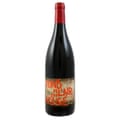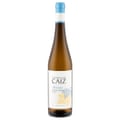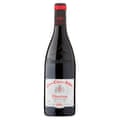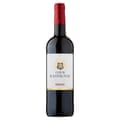My late husband had a bit of a thing about vintage cars. Well, more than “a bit” – at one point, he had seven. Granted, they were beautiful and rather glamorous to be driven in, but they also tended to break down, often in the most inconvenient of places. You rode in them at your own risk.
Vintage wines are much the same. Old wines may be revered, but they can often be a let-down, particularly if they’ve been kept in less than ideal conditions, and turn out to be clapped out just when you most want to impress.
Vintage is often used as a synonym for “fine” wine. In fact, almost all wines (champagne and fortified wines such as sherry apart) are vintage in the sense that they come from a specific harvest. The key thing to take into account when you’re buying them is whether they’re recent or older and, depending on your personal taste, that may be a good or a bad thing.
There’s a tendency, particularly with reds, to think the older, the better, but that’s not necessarily the case. As wines age, they cease to be bright and fruity, and often develop more complex flavours that may not particularly appeal to you. The joyously exuberant 2020 vin de France in today’s pick is proof that reds don’t have to be cellared for years to be enjoyable.
And although too much store can be set by vintages, you do need to keep an eye on what you’re being offered. I was recently sent a selection of wines by Ocado from a South African producer whose wines I generally like, but two 2013s were just past it. Do try the delicious Fairview Sweet Red (£16.99 Ocado, £15.45 Alexander Hadleigh, 18%), though – 2016 isn’t too old by any means for a port-like wine, and this one would be heavenly with dark chocolate.
So is there such a thing as a great vintage? Yes, but it’s relatively unimportant if you’re not planning to keep the wine for any length of time. And a poor vintage – not that it’s ever referred to as such in the trade – can often turn out better than when it was first assessed. At a recent Lay & Wheeler tasting of so-called “underdog” vintages, the 2014 barolos and 2017 burgundies were outstanding (if you’ve money to burn, splash out on the Manzone Barolo Gramolere 2014 at £31 in bond).
For most of the wines you’re likely to buy, however, and certainly for those selling for less than £8, more recent is more often than not better, bearing in mind that southern hemisphere vintages are six months ahead of ours in Europe.
Five recent vintages to try

Domaine Foulards Le Fond de L’Air Est Rouge 2020 £20.30 Les Caves de Pyrène, £20.49 Tivoli Wines (or £18.44 if you buy a case), 11.5%. Light, bright and delicious, overflowing with glorious redcurrant and raspberry fruit. A real vin de soif.

Encostas de Caiz Vinho Verde Avesso 2019 £6.49 Lidl, 12.5%. Lovely, fresh, spring-like white from northern Portugal. Perfect with seafood and salads.

Cru des Côtes du Rhône Vinsobres 2018 £7.50 Asda, 14.5%. The Rhône has had some really good vintages lately, and this handsomely bottled Vinsobres is an excellent example. Try with a roast or a stew.

Cour Rastignac Médoc 2017 £10 Morrisons, or £6.66 on a buy-two-get-one-free deal, 13%. A modest claret that shows the value you can get from Bordeaux in an uncelebrated vintage. Would go with a Sunday roast or (according to the label) braised guinea fowl with prunes and bacon.

Tesco Finest Viña del Cura Rioja Reserva 2016 £8.50, 14%. Maturity and mellowness is part of rioja’s charm, and a reserva has to be aged for three years before release. This one would be perfect with lamb.

Comments (…)
Sign in or create your Guardian account to join the discussion